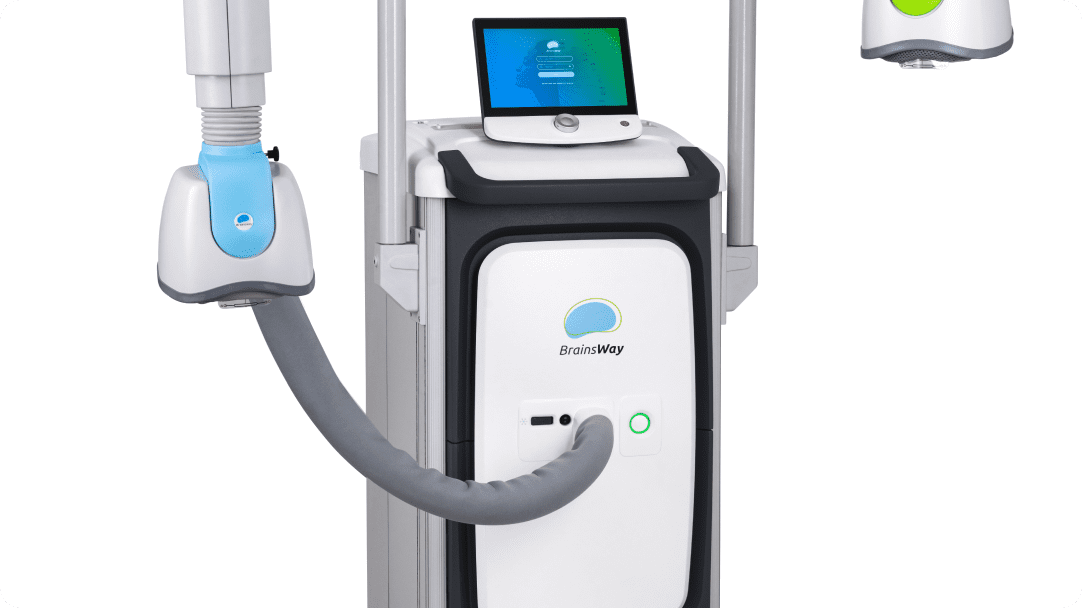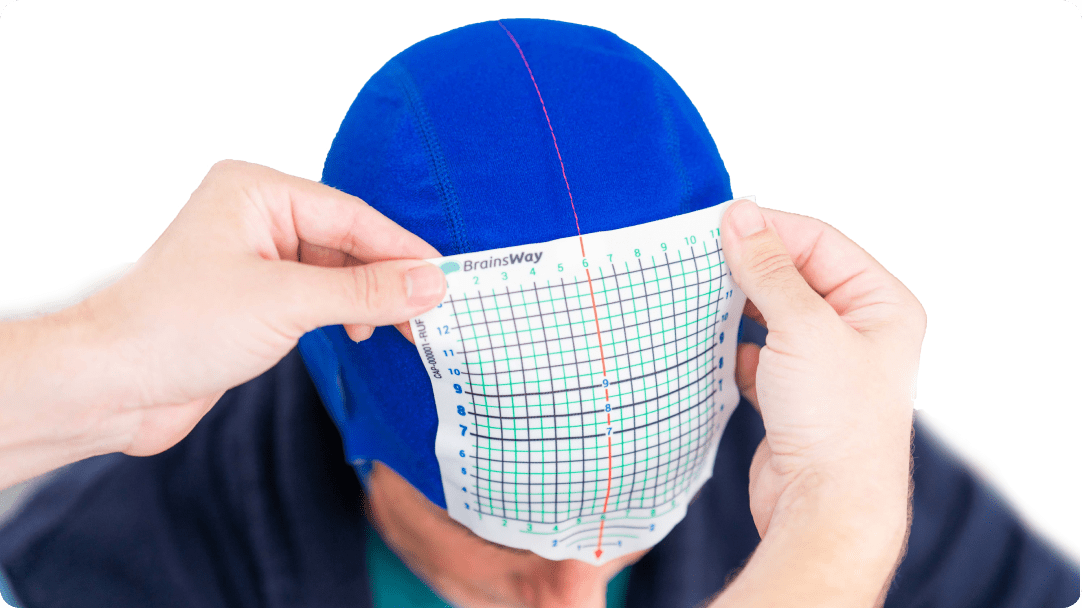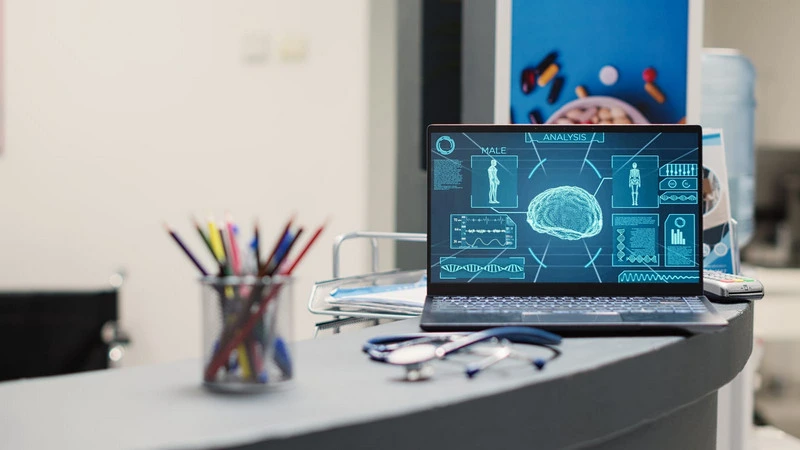- Jay Schiff
- 0 Comments
TMS, or Transcranial Magnetic Stimulation, is a non-invasive treatment for several mental health conditions and chronic pain. It is a form of treatment that has been FDA-approved for over 15 years. This article will explore the mechanisms of TMS, focusing on how TMS works in the brain.
Many people are still confused about TMS and how it works.
Basics of Transcranial Magnetic Stimulation
At our facility, we can answer questions like “How does a TMS work?” easily.
BrainsWay developed Deep TMS, which is a unique technology that stimulates deeper and broader neural targets. It uses a patented coil to induce an electric field in the brain responsible for stimulating neurons.
The intensity of the field is always strongest at the scalp and decreases as the field gets farther into the brain. But this unique coil has a slow rate of decay, so the strength is sustained deeper in the brain. The stronger it is at deeper levels, the more neurons get targeted by the electric field. Moreover, evidence suggests that these deeper neurons are positioned in parallel to the field, which makes them more receptive to the stimulation.

With direct and indirect stimulation, the medial and lateral prefrontal cortex structures can be targeted effectively. Standard positioning techniques can miss the target area entirely in many cases. However, the technology used by BrainsWay means a broader area can be targeted, increasing the efficiency.
- 1 out of 3 medication-resistant patients received remission.
- 4 out of 4 patients receive a significant response to BrainsWay deep TMS treatment.
- Over 90% of people in America also get reimbursed by their insurance provider when using TMS treatment.
Unraveling the Principles of TMS
The brain works with electricity as an electrochemical organ. Neurons in the brain fire to talk to one another, and when they do, they send ions through special E-fields that scientists can measure.
The brain also responds to E-fields from outside the body, like that created by TMS. TMS represents a tool that applies energy to the brain in a way that modulates neural activity. Non-invasive neuromodulation can help change activity in areas like the prefrontal cortex, which might be dysfunctional and cause symptoms of common mental health disorders like depression or anxiety, even chronic pain.
- Magnetic Stimulation of Neuronal Activity
TMS is very distinct when it comes to treatments in terms of neuronal activity. Firstly, pharmacological medications target receptors, and they can change regulatory mechanisms in the body, but they don’t change neural activity. TMS, on the other hand, targets membrane potentials located in the dendrites and the axons, which means it gets a much deeper and more concise response by reaching the neurons themselves.
Secondly, prescription medications get distributed systematically throughout the body in the brain, absorbed by the stomach or intestines, and then distributed through the bloodstream, so it doesn’t always provide a concerted measure of treatment. By comparison, TMS is used to Target specific structures in the brain and to use varying degrees of intensity. Medications remain in a ready state in your blood, but TMS can apply stimulation at specific times based on the level of neural activity that’s happening.

- Spatial and Temporal Precision
This, when used for things like acute migraines or acute panic attacks, can actually target individual phases of your neural oscillations. Doing so during acute activity can cause those neural oscillations to abruptly stop or reduce, which can directly resolve the symptoms. Medication has to build up in your blood in its steady state before it can be effective, and it doesn’t work in a time-sensitive manner for acute symptoms the same as TMS.
TMS is much better when it comes to spatial and temporal precision as well because it can reach specific areas and, through neuromodulation, change the function of your brain.
Mechanisms of Action in the Brain
There are several individual regions of the brain associated with different mental health conditions, including the following:
- the medial prefrontal cortex;
- dorsolateral prefrontal cortex;
- inferior frontal gyrus;
- superior parietal lobe;
- middle temporal gyrus;
- superior temporal sulcus;
- lateral occipital cortex;
- supplementary motor area/paracentral gyrus.
In several mental health conditions, more than one area might be the source of individual symptoms. For example, anxiety disorders may have hypoactivity in the lateral prefrontal cortex but hypersensitivity in the medial prefrontal cortex and amygdala.
That is why TMS works hard to identify different regions of the brain through brain mapping and then targets those areas exclusively with magnetic pulses.
Note: not every brain is the same. That’s why mapping is such an important part of the beginning of your treatment. Mapping helps to determine the size and shape of different parts of the brain. Moreover, the brain regularly grows, which means the location and size could change with time.

- Neural Effects of TMS
TMS helps to stimulate blood flow and, by extension, neural activity and connectivity in specific areas. This comes with many positive results. For example:
With TMS, studies have confirmed that high-frequency magnetic stimulation over the right dorsolateral prefrontal cortex offers significant relief for PTSD and anxiety disorders.
Other work has corroborated that the functions in the amygdala frontal network are a key part of what controls anxiety disorders like social anxiety disorder. Individuals who struggle with social anxiety disorder have hypoactivity in the lateral prefrontal cortex and hypersensitivity in the amygdala and the medial prefrontal cortex.
Those who used TMS for SAD have found:
- Significant reduction in fear and avoidance symptoms
- Significant reduction in levels of worry
- Improved emotional regulation
- Improved quality of life
Research confirms that low-frequency TMS to the dorsolateral prefrontal cortex can help improve executive function skills for those with Autism.
TMS that targets the primary motor cortex can be a viable chronic pain treatment for things like Complex regional pain syndrome, Neuropathic pain, or Fibromyalgia.
- Neuroplasticity and Synaptic Plasticity
How does TMS work for different conditions? It works by targeting different areas of the brain with an understanding of neuroplasticity. Neuroplasticity means the brain is essentially plastic, not hard, and therefore, can grow and move and be shaped.
How does TMS therapy work on pain or mental health? It sends magnetic pulses that reach deeper areas of the brain that medication might not otherwise reach and helps the area grow and change for the better.
In some conditions, this might mean calming down the overexcitability of neurons; in others, it might mean adding more blood flow to the area and tackling interactivity.
This work naturally encourages the synapses in the brain and the neurotransmitter systems to repair themselves and go back to normal functioning.
Summing Up
How does TMS work? With neuroplasticity and targeted magnetic pulses, decoding the mechanisms of Transcranial Magnetic Stimulation (TMS) in the brain can help you get a better idea of the safety and efficacy of this treatment. There is great potential for TMS therapy to modulate neural circuitry, promote neuroplasticity, and alleviate symptoms of various neurological and psychiatric disorders. If you are considering TMS, speak to a healthcare professional today.
